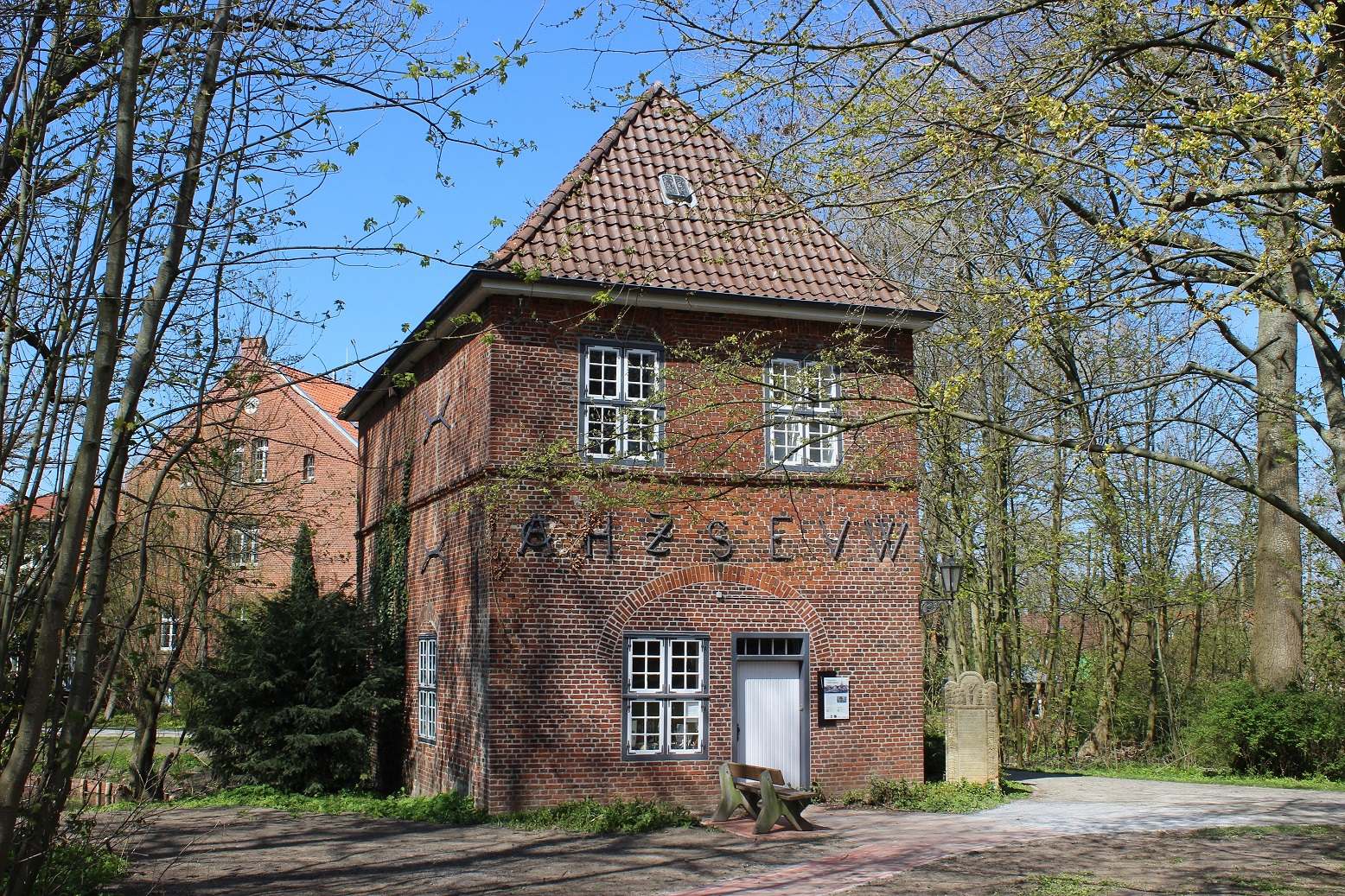Welcome to the audio tour through our historic town Otterndorf. 9th grade students from the local school Gymnasium Otterndorf have translated and recorded the English version of the tour for you.
The “Torhaus” is the last real structural relic of the centuries of reign of the dukes of Saxe-Lauenburg over the county Hadeln and thus over Otterndorf. In 1641, so during the Thirty Years’ War, the fortified castle Otterndorf was reinforced with this “Torhaus” or “Door House”. From here a drawbridge led across the moat, the former path can still be seen in the brickwork on both sides. On the exterior you can see the year of construction, the inside is decorated with a row of iron letters that indicate who the lords of the castle were, namely A and C for August and Catharine, followed by the title and indication of the territory: Duke of Saxony, Engern and Westphalia.
At the end of the 17th century, the dynasty of the Saxe-Lauenburg dukes died out in the male line, which led to a violent dispute over the inheritance between different parties, which was even led with military force in the end. Although the daughters of the last duke were entitled to inherit, they couldn’t enforce their claim. The emperor first took over the Land Hadeln on trust, before he entrusted it to the House of Hanover in 1731, which by now not only had acquired the electoral dignity, but also – as the new European superpower – had become the house of the King of England.
Meanwhile, the castle of the Lauenburg dukes was in a bad state and was torn down in 1773 and replaced with a district office, in which the district court is housed today. After the “Torhaus” was used as an apartment for the district messenger and the court attendant, it was remodelled into a museum of local history in 1934.
After the Second World War, Hadeln accepted the sponsorship for the formerly East Prussian district Labiau. Even when Hadeln later became the administrative district Cuxhaven, this sponsorship was maintained.
During the course of that, the old “Torhaus” was provided for the museum of the now homeless East Prussian history and culture since 1988.
